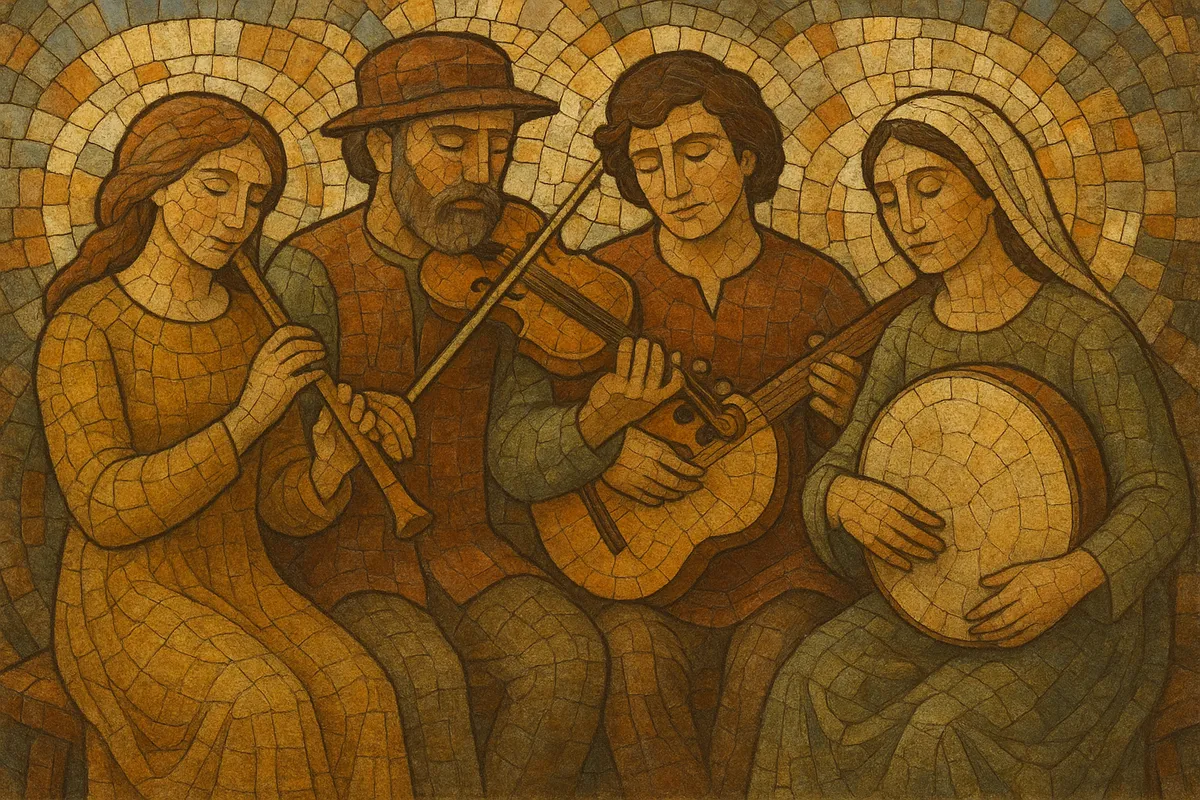
Traditional folk is a broad umbrella for orally transmitted songs and dance tunes that circulated in rural and working-class communities before the age of mass recording. Repertoires include narrative ballads, laments, love songs, work songs, lullabies, and instrumental dance sets such as reels, jigs, hornpipes, and marches.
Stylistically, traditional folk favors strophic forms, pentatonic or modal melodies (often Dorian and Mixolydian), limited harmonic movement, and strong, memorable tunes designed for communal singing and dancing. Performances range from unaccompanied solo voice to small ensembles built around fiddle, flute/whistle, pipes, concertina/accordion, guitar, banjo, and frame drum. Ornamentation, variation by verse, and flexible tempo are integral, reflecting an oral tradition where songs live through continual reinterpretation.
Although it is pan‑regional, the modern idea of “traditional folk” coalesced in the 19th century through collectors and revivalists who documented vernacular music and framed it as cultural heritage.
Traditional folk predates commercial music industries, emerging from community life—work, worship, courtship, celebration, and mourning. Songs were taught by ear, adapted to local dialects, and reshaped by each singer. Dance tunes developed alongside social dances, with cyclical AABB forms optimized for sets and ceilidhs.
In the 1800s, scholars and enthusiasts in the British Isles and beyond began transcribing songs and tunes, giving rise to the modern concept of “traditional folk.” Collections such as the Child Ballads (late 19th century) and later Cecil Sharp’s song books preserved repertoire that had circulated orally for centuries. This era framed folk music as a national and regional heritage to be safeguarded.
Early recording technology captured field performances, while radio popularized traditional ensembles. Mid‑century folk revivals in the UK, Ireland, and the US brought traditional songs to urban stages and folk clubs. Artists and groups maintained unaccompanied singing traditions and dance‑tune medleys while also experimenting with guitar accompaniments and harmonies.
Traditional folk’s portable instrumentation and communal ethos encouraged session culture—informal gatherings where players trade tunes, share variants, and learn by ear. Regional idioms (for example, English, Irish, Scottish, Appalachian) developed recognizable ornamentation and tune types, yet the core principles—modal melody, strophic narrative, and communal participation—remained constant.
Traditional folk underpins modern folk revival scenes and has directly influenced country, bluegrass, folk rock, and numerous contemporary acoustic styles. Its emphasis on storytelling, melody, and community continues to shape roots and indie movements.

